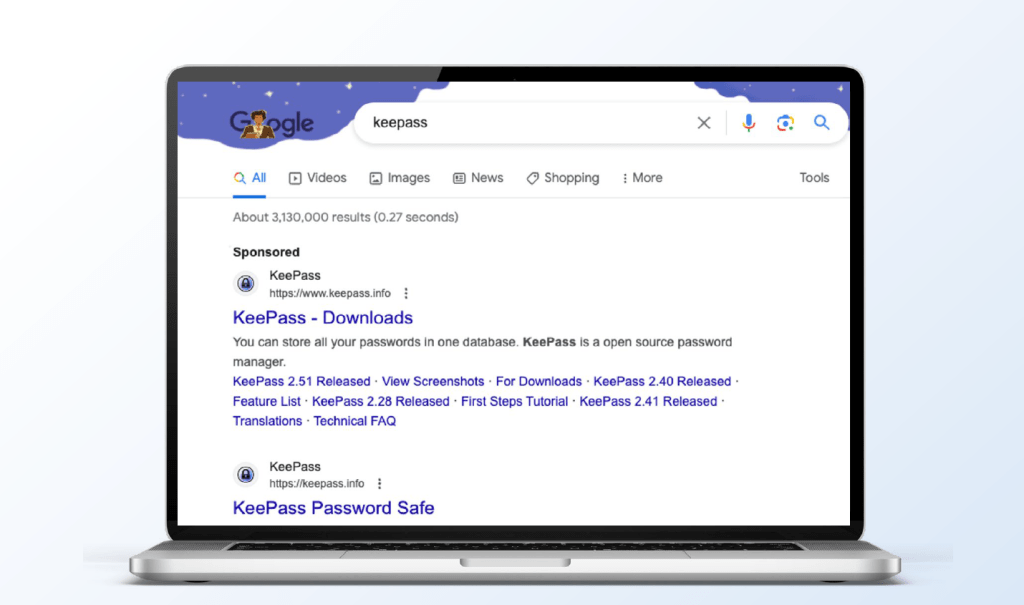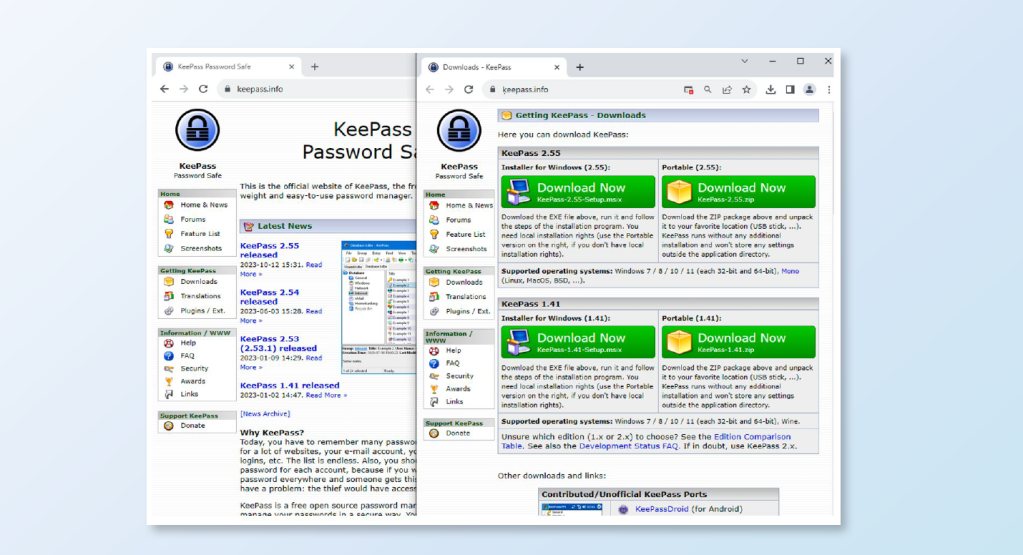Malvertising: This cyberthreat isn’t on the dark web, it’s on Google
On the internet, people need to worry about more than just opening suspicious email attachments or entering their sensitive information into harmful websites—they also need to worry about their Google searches.
That’s because last year, as revealed in our 2024 ThreatDown State of Malware report, cybercriminals flocked to a malware delivery method that doesn’t require they know a victim’s email address, login credentials, personal information, or, anything, really.
Instead, cybercriminals just need to fool someone into clicking on a search result that looks remarkably legitimate.
This is the work of “malicious advertising,” or “malvertising,” for short. Malvertising is not malware itself. Instead, it’s a sneaky process of placing malware, viruses, or other cyber infections on a person’s computer, tablet, or smart phone. The malware that eventually slips onto a person’s device comes in many varieties, but cybercriminals tend to favor malware that can steal a person’s login credentials and information. With this newly stolen information, cybercriminals can then pry into sensitive online accounts that belong to the victim.
But before any of that digital theft can occur, cybercriminals must first ensnare a victim, and they do this by abusing the digital ad infrastructure underpinning Google search results.
Think about searching on Google for “running shoes”—you’ll likely see ads for Nike and Adidas. A Google search for “best carry-on luggage” will invariably produce ads for the consumer brands Monos and Away. And a Google search for a brand like Amazon will show, as expected, ads for Amazon.
But cybercriminals know this, and in response, they’ve created ads that look legitimate, but instead direct victims to malicious websites that carry malware. The websites themselves, too, bear a striking resemblance to whatever product or brand they’re imitating, so as to maintain a charade of legitimacy. From these websites, users download what they think is a valid piece of software, instead downloading malware that leaves them open to further attacks.


It’s true that malvertising is often understood as a risk to businesses, but the copycat websites that are created by cybercriminals can and often do impersonate popular brands for everyday users, too.
As revealed in our 2024 ThreatDown State of Malware report, the five most impersonated brands for malvertising last year included:
- Amazon
- Rufus
- Weebly
- NotePad++
- TradingView
These five brands may not all carry the same familiarity, but their products and services capture a broad swath of user interest, from Weebly’s website creation products, to TradingView’s investment trading platform, to Rufus’s niche-but-useful portable OS booting tool.
Why the increase in malvertising last year?
If Google ads have been around for more than a decade, why are they only being abused by cybercriminals now? The truth is, malvertising has been around for years, but a particular resurgence was recorded more recently.
In 2022, cybercriminals lost access to one of their favorite methods of delivering malware.
That summer, Microsoft announced that it would finally block “macros” that were embedded into files that were downloaded from the internet. Macros are essentially instructions that users can program so that multiple tasks can be bundled together. The danger, though, is that cybercriminals would pre-program macros within certain files for Microsoft Word, Excel, or PowerPoint, and then send those files as malicious email attachments. Once those attachments were downloaded and opened by users, the embedded macros would trigger a set of instructions directing a person’s computer to install malware from a dangerous website online.
Macros were a scourge for cybersecurity for years, as they were effective and easy to deliver.
But when Microsoft restricted macro capabilities in 2022, cybercriminals needed to find another malware delivery channel. They focused on malvertising.
Today’s malvertising is increasingly sophisticated, as cybercriminals can create and purchase online ads that target specific types of users based on location and demographics. Concerningly, modern malvertising can even avoid basic fraud detection as cybercriminals can create websites that determine whether a user is a real person or simply a bot that is trawling the web to find and flag malicious activity.
How to protect against malvertising
The threat of malvertising is multi-layered: There are the fraudulent ads that cybercriminals place on Google search results, the malicious websites that imitate legitimate brands and companies to convince users to download malware, and the malware infection itself.
As such, any successful defense strategy must be multi-layered.
For safe browsing, people can rely on Malwarebytes Browser Guard, a browser extension that blocks third-party tracking and flags malicious websites known to be in the control of cybercriminals. As we wrote before:
“Malwarebytes Browser Guard provides additional protection to standard ad-blocking features by covering a larger area of the attack chain all the way to domains controlled by attackers. Thanks to its built-in heuristic engine it can also proactively block never-before-seen malicious websites.”
The problem with malvertising, though, is that new malicious websites are created every single day. Cybersecurity defenders, then, are often caught in a game of catch-up.
Here, users can find safety from Malwarebytes Premium, which provides real-time protection to detect and stop any cyberthreats that get installed onto a device, even if those threats are masquerading as legitimate apps or software.
We don’t just report on threats—we remove them
Cybersecurity risks should never spread beyond a headline. Keep threats off your devices by downloading Malwarebytes today.